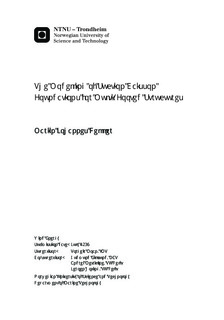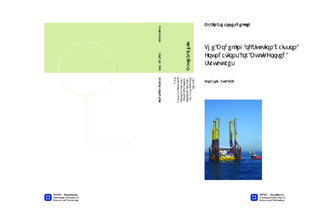| dc.contributor.advisor | Moan, Torgeir | nb_NO |
| dc.contributor.advisor | Eiksund, Gudmund | nb_NO |
| dc.contributor.advisor | Metrikine, Andrej | nb_NO |
| dc.contributor.advisor | Hoving, Jeroen | nb_NO |
| dc.contributor.author | Dekker, Marijn Johannes | nb_NO |
| dc.date.accessioned | 2014-12-19T12:13:14Z | |
| dc.date.available | 2014-12-19T12:13:14Z | |
| dc.date.created | 2014-10-31 | nb_NO |
| dc.date.issued | 2014 | nb_NO |
| dc.identifier | 759898 | nb_NO |
| dc.identifier | ntnudaim:12017 | nb_NO |
| dc.identifier.uri | http://hdl.handle.net/11250/239240 | |
| dc.description.abstract | Suction caissons are a type of offshore foundation that allow for fast and noise-free installation and decommissioning of offshore structures. They have been used for 20 years in the oil and gas industry and are also becoming more common in the offshore wind sector as a promising way to cost reduction. SPT is a leading contractor for the installation of both single anchor piles and foundations on multiple caissons. The suction caissons are installed by applying a differential pressure between the inner and outer sides of the caissons, which pushes the caissons into the soil. When a platform is founded on multiple suction caissons, the way the wind and wave loads are transferred through the structure and various caissons into the soil will depend on the stiffness of both the platform and the caissons. The design of the substructure and suction caissons should thus be combined to include the effects of soil-structure interaction. This is currently done by modelling the suction caisson foundations as a set of linear-elastic springs attached to the substructure. These springs are however not able to capture the non-linear behaviour that is often characteristic for soils. A method has been developed to model the suction caisson foundations using non-linear springs. The characteristics of the springs are determined using FEM calculations with a nonlinear soil model in the geotechnical software PLAXIS. The springs are then implemented in a structural model of the substructure and the multiple foundations in the structural software SACS. The resulting loads on and displacements of the suction caisson foundations for a test load case have been compared to results from a complete FE model and a model that uses linear-elastic springs. The comparison has shown that the developed model gives results that match well with the results from the full FE model. The linear-elastic model on the other hand gives results that deviate significantly for high loads.When the stresses in the soil increase the soil will behave softer, leading to an increase of the displacements of the suction caissons for high loads. The substructure will help decrease large differences between the displacements of the suction caissons, resulting in a more even load distribution over the foundations and thus smaller design loads for the suction caissons. This allows for smaller suction caissons and savings of material and costs. The model with nonlinear springs is able to predict this behaviour of the soil and the substructure accurately and can be used to make a more efficient design of suction caisson foundations. | nb_NO |
| dc.language | eng | nb_NO |
| dc.publisher | Institutt for marin teknikk | nb_NO |
| dc.title | The Modelling of Suction Caisson Foundations for Multi-Footed Structures | nb_NO |
| dc.type | Master thesis | nb_NO |
| dc.source.pagenumber | 172 | nb_NO |
| dc.contributor.department | Norges teknisk-naturvitenskapelige universitet, Fakultet for ingeniørvitenskap og teknologi, Institutt for marin teknikk | nb_NO |

